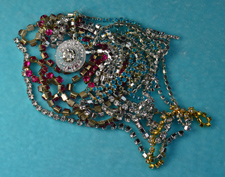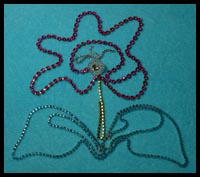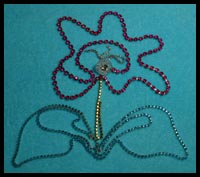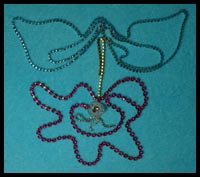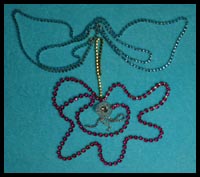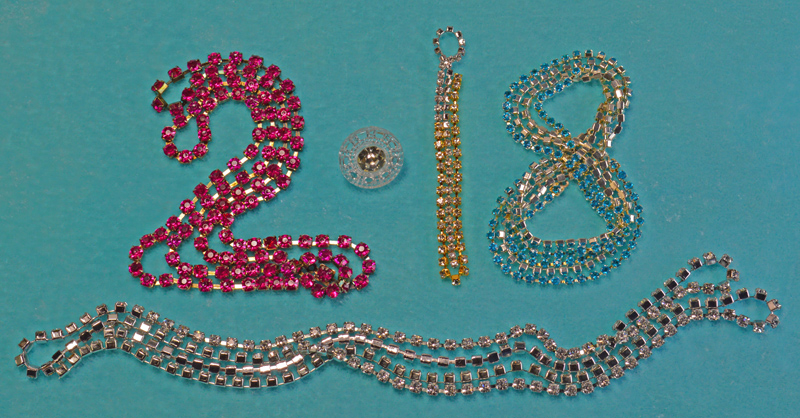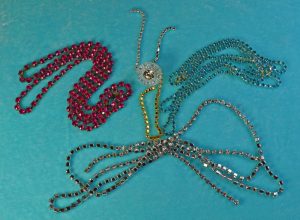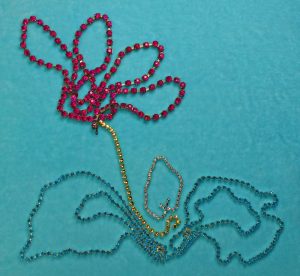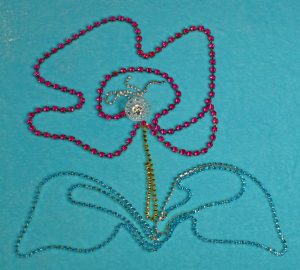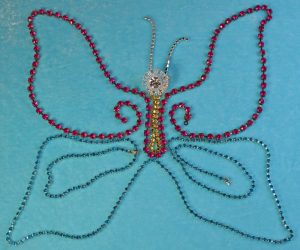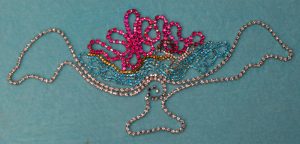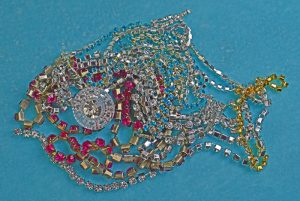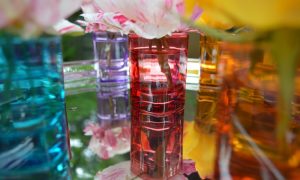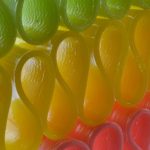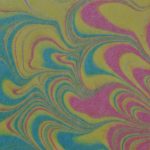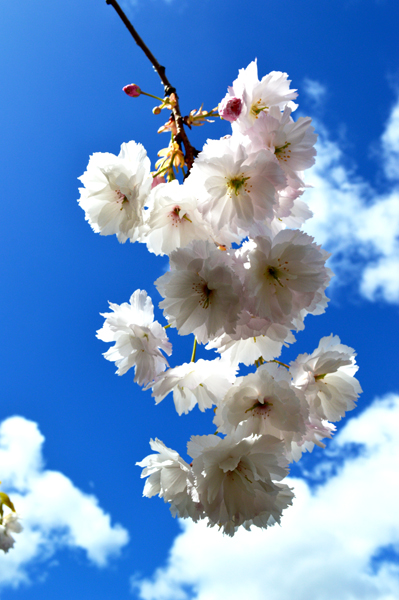
Finally, one day it happens. Artists need to burst out of the studio. The pen runs out of ink, the clay is too wet to cast in plaster, the light is not right to photograph the painting. All those little studio frustrations that normally one takes in stride suddenly overwhelm. Outside, the sun is shining, birds are singing and most importantly, the pom-pom cherries are in bloom!
Grab the camera and be in the world. How can they say the artist is only an observer? True isolation is impossible – the world knows you are part of it and will find ways to remind you. It may be the way the light shines through petals or a chat with a neighbor. Bring that invigorating energy back into the studio. Suddenly those frustrations become small again and very manageable. Ideas flow and problems feel solvable.
A. How the camera saw this branch
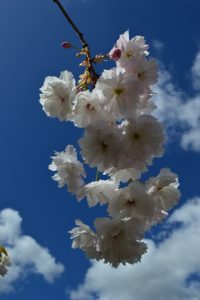
B. Photoshop Brightness/contrast C. Photoshop Autosmart tone
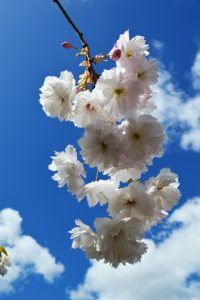
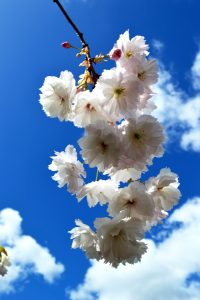
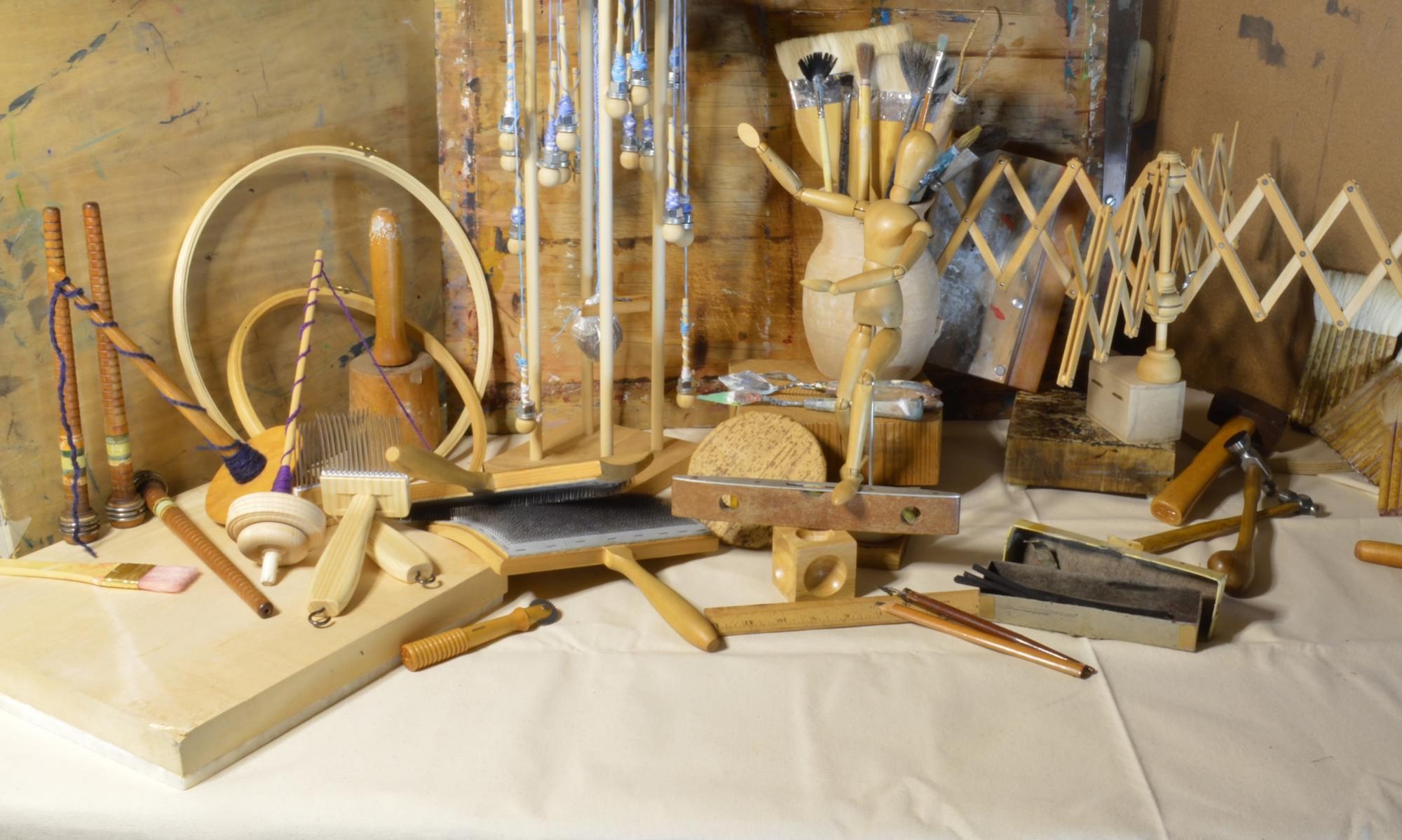
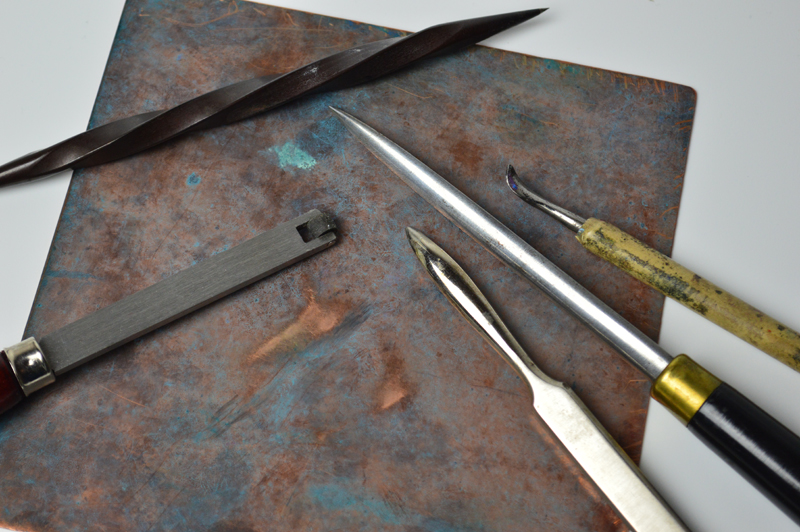 “Marking tools, burnishing tools”
“Marking tools, burnishing tools”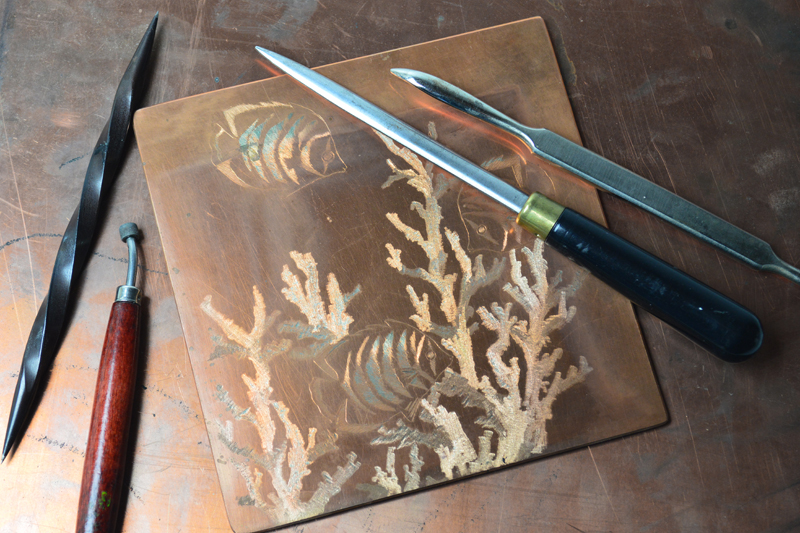 Photography note: the plate is lifted off the background to change the way the light caught the edges. The range of warm and cool highlights in the reflections was brought out with multiple lamps each with different watt bulbs.
Photography note: the plate is lifted off the background to change the way the light caught the edges. The range of warm and cool highlights in the reflections was brought out with multiple lamps each with different watt bulbs.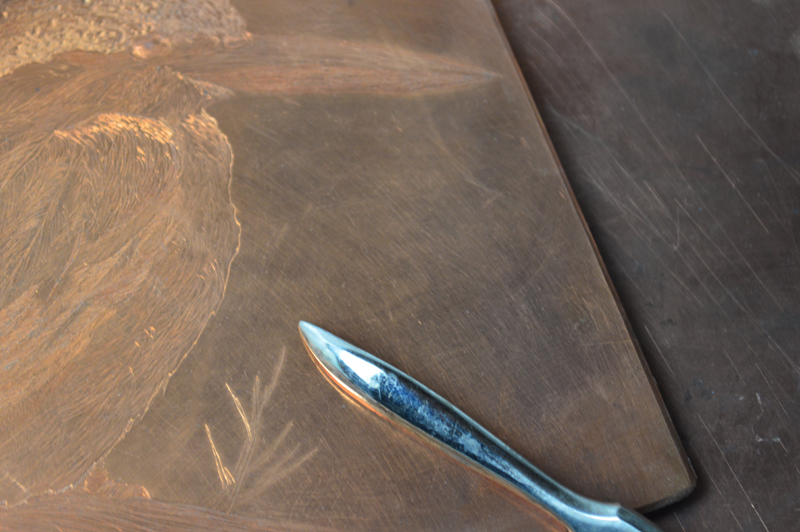 Photography note: Not all “hot spots” are bad, we like the bright reflection on the burnisher’s top surface since it reinforced the idea of bright light playing off shiny spots. The shape of the hot spot also echoes the shape of the bird’s beak, a happy accident that didn’t show up through the camera lens.
Photography note: Not all “hot spots” are bad, we like the bright reflection on the burnisher’s top surface since it reinforced the idea of bright light playing off shiny spots. The shape of the hot spot also echoes the shape of the bird’s beak, a happy accident that didn’t show up through the camera lens.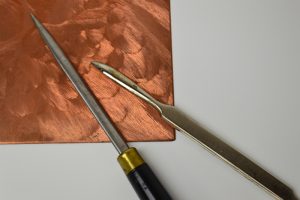 “Plate in progress with burnishing tools”
“Plate in progress with burnishing tools”